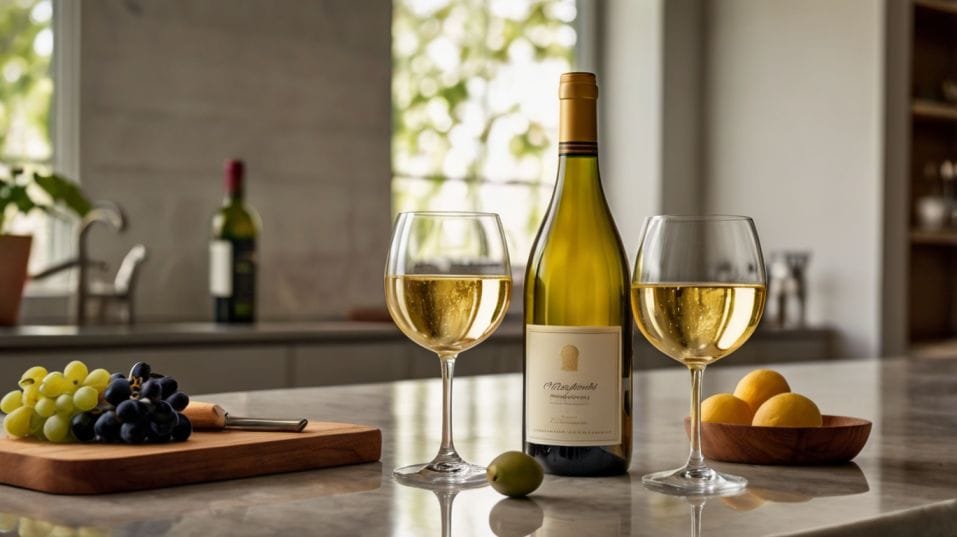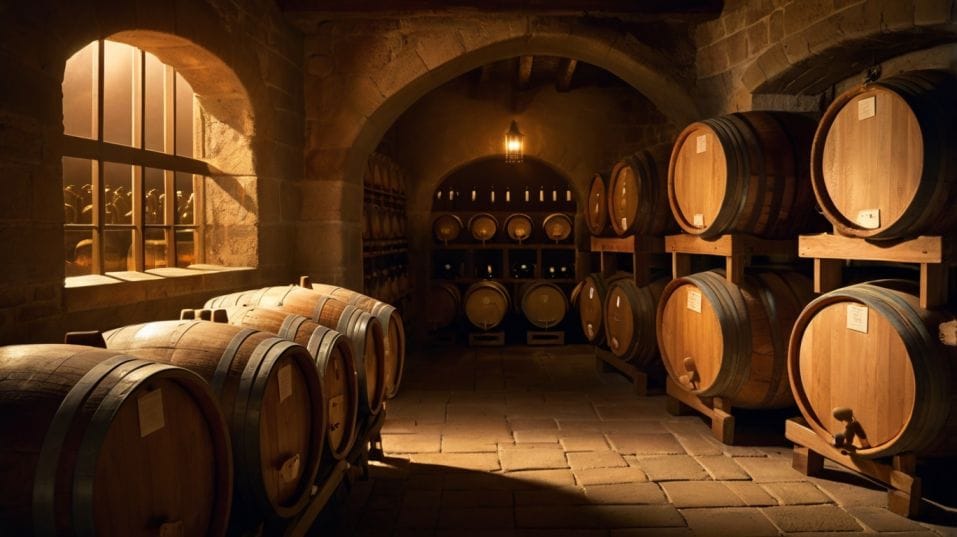Chardonnay: From Creamy to Crisp (And Why That Happens)
Discover why Chardonnay tastes so different from bottle to bottle—and how to decode it with confidence, whether you're tasting or collecting.

Why does one Chardonnay taste crisp like green apple, while another melts like butter on toast? If you’ve ever been caught off guard by the same grape showing two very different faces, you’re not alone.
Chardonnay is a shapeshifter—one of the most versatile wines in the world. Learning how and why it changes is the key to unlocking white wine. If you're just getting serious about wine, this is where your palate takes a major leap forward.
Why Chardonnay Doesn’t Taste Like “Just One Thing”
Chardonnay doesn’t come with a fixed flavor profile. That’s what makes it fascinating—and occasionally confusing.
Unlike aromatic grapes such as Gewürztraminer or Viognier, which have built-in perfume and structure, Chardonnay is relatively neutral. That neutrality gives winemakers room to shape the final wine in a dozen different ways.
What does that mean for you? It means that tasting Chardonnay is really tasting technique, climate, and intention.
The same grape can be transformed into something nervy and mineral or lush and indulgent. Once you know what to look for, the differences start making sense—and the experience becomes much more rewarding.

The Role of Climate: Cool, Warm, and Everything In Between
Think of Chardonnay as a traveler—it takes on the accent of wherever it’s grown. A vine planted near a foggy coastline will ripen slowly.
The result? Grapes with high natural acidity and lean, tart fruit flavors like green apple, citrus, and pear. These are often described as “cool-climate Chardonnays,” and they’re crisp, refreshing, and precise.
In contrast, plant that same vine in a sunny inland valley or low elevation vineyard, and you get something completely different.
Warmer temperatures lead to riper fruit, lower acidity, and flavors that edge toward melon, peach, or even pineapple. These wines are often fuller in body and feel more generous and rounded in the mouth.
Here’s where it gets more interesting: the winemaker chooses how much of that climate expression to amplify—or tame—through technique.
Oak: The Winemaker’s Signature Brushstroke
Oak is one of the most influential tools in Chardonnay’s transformation. But it’s not just “oaked or unoaked.” The spectrum is wider than that, and every choice leaves a mark on the wine’s flavor, structure, and feel.
New vs. Old Oak
New oak barrels (especially American oak) give strong, recognizable flavors: vanilla, coconut, toast, even baking spice.
French oak tends to be subtler—more about texture and finesse than overt flavor. And older barrels (neutral oak) soften the wine without changing its character much.
Time in Barrel
Then there’s time. A wine aged in oak for just a few months might pick up a touch of roundness and spice. A year or more? That’s when you get those rich, toasty, nutty layers people often associate with “classic” Chardonnay.
If you’re sipping a Chardonnay that reminds you of crème brûlée or buttered croissant, oak had something to say.
Malolactic Fermentation: Where Butter Comes From
Let’s clear up one of the most misunderstood terms in wine: malolactic fermentation, or “MLF” for short.
This isn’t actual fermentation—it’s a secondary process where sharp malic acid (the same acid in green apples) gets converted into lactic acid (the acid found in milk and yogurt).
This softens the wine’s texture and creates that creamy, buttery character you sometimes notice in California Chardonnay.
Some winemakers let the entire batch go through malolactic fermentation. Others only allow a portion to undergo the change, blending it back into a crisper base for balance. And some skip it entirely.
When you taste a Chardonnay that feels round, smooth, or buttery—but doesn’t scream oak—it’s likely MLF at work.
Lees Aging: Texture Without Toast
Lees aging adds body and complexity, especially in wines that skip oak altogether. Lees are the dead yeast cells left over after fermentation.
If left in contact with the wine, they begin to break down (a process called autolysis), which can add creamy, bready, or even nutty flavors.
Stirring the lees (bâtonnage) distributes those textures more evenly and increases richness. This is how some Chardonnays manage to feel luxurious and layered even without oak or MLF.
If a wine tastes creamy but still fresh—think yogurt, not butter—it probably saw extended time on lees. Lees aging is especially common in Old World regions like Burgundy, and in newer producers who want complexity without heaviness.
Tasting With Intention: What to Look For
When you taste Chardonnay, start with two basic questions: Is it bright and zippy—or round and rich? Does it taste more like fruit or like something added (spice, toast, butter)?
That framework helps you decode how the wine was made—and where it’s from. A wine with sharp acidity, green fruit, and almost no extra flavors?
Likely cool climate, no oak, no MLF. A golden-colored wine with tropical notes and a creamy finish? Probably warm climate, full MLF, and some oak.
You don’t need to memorize regions or techniques right away. Just start connecting what you taste to what’s behind it. The more you compare and contrast, the more your palate learns.
Chardonnay and Food: Pairing With Precision
Because Chardonnay comes in so many forms, its pairing potential is broad—but not random. Use body and acidity as your guide.
- Crisp, lean Chardonnays (especially unoaked) are ideal with oysters, sushi, goat cheese, or citrus-dressed salads. The high acid cuts through fat and brightens delicate flavors.
- Creamy, oak-aged Chardonnays shine with richer dishes: roast chicken, buttery lobster, risotto, or even pork tenderloin with a pan sauce. The texture of the wine matches the weight of the food.
One useful rule: if the wine has structure and lift, keep the food light. If the wine is lush and creamy, match it with depth and fat.
Final Thoughts: From Grape to Glass, You’re in Control
Chardonnay is a mirror. It reflects its place, its treatment, and the choices behind it. That’s what makes it one of the most exciting wines to learn from—and one of the most useful to know.
Understanding the range between creamy and crisp doesn’t just make you a better taster. It gives you agency at the shelf, at the table, and every time you open a bottle.
So here’s your next move: Pick up two Chardonnays this week. Choose one labeled “unoaked” or from a cool-climate region.
Choose another that leans rich—maybe from California or with tasting notes like “buttery” or “full-bodied.” Taste them side by side. Ask what you’re tasting, and why.
Every glass is a chance to refine your palate, deepen your understanding, and enjoy wine more intentionally. The better you know Chardonnay, the better you’ll know your own taste.




